Introduction:
A Detailed Guide to the Mid day Meal Scheme – Malnutrition is a widespread issue in India, particularly among growing children. The prevalence of nutritional deficiencies among school-going children is a matter of concern. Malnutrition not only leads to health problems and mortality but also hampers the full development of a child into a functional adult. It has a significant adverse impact on education in several ways.
Firstly, a malnourished child is less likely to attend school regularly. The physical and cognitive effects of malnutrition can make it difficult for them to consistently participate in school activities. Consequently, they may miss school frequently, leading to irregular attendance.
Secondly, even if a malnourished child manages to attend school, they often struggle to concentrate and actively engage in the teaching-learning process. Malnutrition affects cognitive abilities, making it challenging for these children to grasp and retain information effectively. As a result, they may find it hard to keep up with their peers, leading to feelings of frustration and a higher likelihood of dropping out of school.
Thirdly, even for those malnourished children who do not drop out, their academic achievements tend to be lower compared to well-nourished students. The lack of essential nutrients can hinder their cognitive development and overall learning potential. Consequently, their performance levels may remain below average, affecting their educational outcomes and opportunities for future success.
Also Read: https://legalreferencer.in/pradhan-mantri-kisan-samman-nidhi/
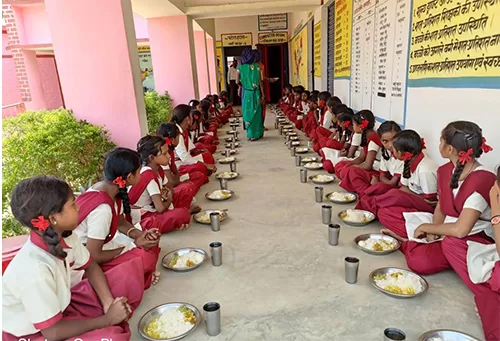
To address these challenges, the implementation of the Mid-Day Meal program in schools aims to support the Universal Elementary Education (UEE) goals in the following ways:
Firstly, by providing nutritious meals to students, the program aims to improve enrollment rates and encourage regular attendance. By addressing the issue of hunger and malnutrition, children are more likely to attend school consistently, leading to improved educational outcomes.
Secondly, the Mid-Day Meal program seeks to reduce dropout rates. By ensuring that children receive a wholesome meal during the school day, it reduces the financial burden on families who may struggle to provide adequate nutrition. This intervention helps alleviate one of the reasons children drop out of school, as they no longer need to choose between education and their basic nutritional needs.
Lastly, the program aims to enhance children’s levels of learning and self-esteem. By combating malnutrition, students’ cognitive abilities are improved, enabling them to engage more actively in classroom activities and develop their academic skills. The provision of nutritious meals not only positively impacts their physical health but also contributes to their overall well-being and self-confidence.
In summary, malnutrition poses a significant challenge to the education system in India. However, the implementation of the Mid-Day Meal program in schools has proven to be an effective strategy to address this issue. By improving enrollment rates, reducing dropouts, and enhancing children’s learning outcomes, this program plays a vital role in promoting Universal Elementary Education and ensuring a brighter future for India’s children.
The National Programme of Nutritional Support to Primary Education, commonly known as the Mid-Day Meal Scheme, was launched as a Centrally Sponsored Scheme on August 15, 1995. Its primary objective was to promote the universalization of primary education by increasing enrollment, retention, and attendance, while also addressing the nutritional needs of students in primary classes.
Since its inception, the Mid-Day Meal Scheme has been implemented in Maharashtra starting from the academic year 1995-96. However, the nature of the scheme underwent a significant change following a landmark decision by the Honorable Supreme Court in Writ Petition No. 196/2001. The court ruled that instead of providing dry rice, cooked meals should be served to children on all school days. This decision aimed to ensure that the meals provided were nutritious and palatable, thereby enhancing the overall impact of the program.
In 2002, the scheme was initially implemented in 15 tribal districts of Maharashtra. However, recognizing its importance and positive outcomes, the scope of implementation was subsequently extended to cover all districts of Maharashtra in January 2003. The scheme targets children in grades I to V in government schools, schools run by local bodies, government-aided private schools, as well as students enrolled in Education Guarantee Scheme Centers (Vastishalas) and Alternative and Innovative Education Centers (Mahatma Phule Education Guarantee Scheme Centers).
Following the guidelines set by the Government of India, the Mid-Day Meal Scheme in Maharashtra was further expanded to include upper primary classes (grades VI to VIII) in 43 educationally backward blocks across 10 districts of the state, starting from January 1, 2008. This expansion aimed to cater to the nutritional needs of older students and ensure continuity in providing meals throughout their primary education.
Currently, the Mid-Day Meal Scheme is being implemented throughout the entire state of Maharashtra since September 2008. The program continues to play a crucial role in supporting the education system by not only addressing hunger and malnutrition but also fostering improved enrollment, retention, and attendance rates among students. By ensuring access to nutritious meals, the scheme contributes to the overall well-being and development of children, promoting a conducive learning environment in schools across the state.
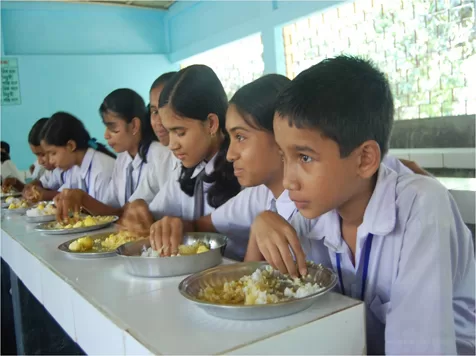
The Mid-Day Meal Scheme aims to achieve several important objectives:
1. Avoid Classroom Hunger:
One of the primary goals of the scheme is to combat classroom hunger. By providing nutritious meals to students during the school day, the program ensures that children have access to adequate food, thereby preventing hunger and its detrimental effects on their physical and cognitive development.
2. Increase School Enrolment:
Another key objective is to boost school enrolment rates. The provision of mid-day meals serves as an incentive for parents to send their children to school, especially in economically disadvantaged communities. By addressing the concern of providing meals, the scheme encourages more children to enroll in schools and receive an education.
3. Increase School Attendance
The scheme also aims to improve school attendance. By offering mid-day meals, it creates a motivating factor for students to attend school regularly. The prospect of receiving a nutritious meal encourages children to come to school, reducing absenteeism and promoting consistent attendance.
4. Improve Socialization among Castes:
The Mid-Day Meal Scheme plays a significant role in fostering social integration and harmony among different castes and communities. By sharing meals together, children from diverse backgrounds have the opportunity to interact, build friendships, and break down social barriers. This promotes inclusivity, understanding, and a sense of unity among students.
5. Address Malnutrition:
Tackling malnutrition is a crucial objective of the scheme. By providing balanced and nutritious meals, it helps to combat the problem of malnutrition among school-going children. The meals are designed to meet the dietary requirements and contribute to the overall health and well-being of the students, improving their physical growth and cognitive abilities.
6. Empower Women through Employment:
The scheme creates employment opportunities for women in the community. By engaging local women as cooks and helpers in preparing and serving the meals, the program promotes women’s empowerment and economic participation. This not only enhances their livelihoods but also fosters gender equality and social empowerment.
7. World’s Largest School Meal Programme:
The scheme holds the distinction of being the world’s largest school meal program, aiming to achieve the universalization of primary education. It demonstrates the scale and importance of providing meals to school children to support their education and overall well-being.
8. Implementation by Ministry of Education:
The Ministry of Education, formerly known as the Ministry of Human Resources and Development, is the authorized body responsible for implementing the Mid day Meal Scheme. The ministry plays a crucial role in ensuring effective execution and coordination of the program across the country.
9. Centrally Sponsored Scheme:
Being a centrally sponsored scheme, the financial burden is shared between the central government and the state governments. The central government bears 60 percent of the cost, while the remaining 40 percent is the responsibility of the respective state governments. This partnership allows for collaborative efforts to ensure the successful implementation of the scheme nationwide.
10. Tamil Nadu’s Pioneering Role:
Tamil Nadu holds the distinction of being the first state to implement the mid day meal scheme. The state’s early adoption of the program showcases its commitment to improving the nutritional status and educational outcomes of school children, serving as a model for other states to follow.
11. Transition to Cooked Mid day Meals:
In 2001, the Mid day Meal Scheme transitioned into a cooked meal scheme. Under this new approach, eligible children receive a freshly prepared mid day meal for a minimum of 200 days in a year. This shift allows for the provision of hot and nutritious meals, enhancing the overall effectiveness of the program.
12. Expansion to EGS and AIE Centers:
Initially, until 2002, the scheme solely targeted government, government-aided, and local body schools. However, recognizing the importance of inclusivity, the program was expanded to include children studying in Education Guarantee Scheme (EGS) and Alternative & Innovative Education (AIE) centers. This extension broadened the reach of the scheme, ensuring that children from these educational facilities also benefited from the midday meals.

Revision in 2004:
In 2004, the Mid day Meal Scheme underwent a revision, introducing several key changes:
#1. Central Assistance for Cooking Cost:
Central assistance was provided to cover the cooking cost of the mid day meals. This financial support helped schools in procuring ingredients and maintaining the quality of the meals.
#2. Transport Subsidy:
A transport subsidy was introduced for all states. Special category states were eligible for a maximum subsidy of Rs. 100 per quintal, while other states received a subsidy of Rs. 75 per quintal. This subsidy aimed to facilitate the transportation of food grains and other supplies to the schools.
#3. Management, Monitoring, and Evaluation:
Emphasis was placed on efficient management, monitoring, and evaluation of the scheme. This step ensured effective implementation and oversight, enabling better assessment of the program’s impact and the identification of areas for improvement.
#4. Provision During Summer Vacation:
Another important addition was the provision to serve mid day meals during summer vacations to children in drought-affected areas. This extension recognized the vulnerability of children during such periods and aimed to provide them with continued nutritional support.
Revision in 2006:
In 2006, the Mid day Meal Scheme underwent further revisions, focusing on enhancing nutritional standards:
#1. Increase in Cooking Cost:
The cooking cost per child/school day was increased to Rs. 1.80 for states in the North Eastern Region and Rs. 1.50 for other states and Union Territories. This adjustment aimed to ensure adequate funds for procuring quality ingredients and preparing nutritious meals.
#2. Revised Nutritional Norms:
The nutritional norms were also revised to meet the increased dietary requirements of the children. The energy intake per meal was raised from 300 calories to 450 calories, while the protein intake was increased from 8-12 grams to 12 grams. These adjustments aimed to provide a more balanced and nourishing diet to the students.
#3. Expansion to Class 6-8 and Madrasas:
In 2007, another significant expansion took place. Children studying in 3,479 Educationally Backward Blocks (EBBs) in classes 6-8 were included in the Mid day Meal Scheme. This expansion recognized the nutritional needs of older students and aimed to support their education and overall development. Additionally, in 2008, madrasas and maktabs supported by the Sarva Shiksha Abhiyan (SSA) were also included in the scheme, ensuring that children from these educational institutions also received the benefits of the mid day meals.
The Mid day Meal Rules of 2015:
The Mid day Meal Rules of 2015 were officially notified on September 30, 2015, as a part of the National Food Security Act (NFSA) of 2013. These rules introduced several important provisions to enhance the effectiveness and administration of the Mid day Meal Scheme. The key points of the MDM Rules, 2015 are as follows:
#1. Utilization of Other Funds:
The rules empower schools to utilize additional funds if the allocated Mid day Meal (MDM) funds get exhausted. This provision ensures that children continue to receive meals even if there is a temporary shortage of MDM funds. By allowing schools to tap into other available funds, the uninterrupted provision of meals is ensured.
#2. Food Allowances:
In cases where schools or other relevant bodies are unable to provide cooked meals to children, the MDM rules mandate the provision of food allowances to beneficiaries. This provision acts as a fallback option, ensuring that children receive necessary nutrition even if cooked meals cannot be provided temporarily. The food allowances serve as an alternative to guarantee continuous access to meals.
#3. Accredited Labs for Testing:
The MDM rules require the involvement of accredited laboratories in conducting monthly testing of the meals provided under the scheme. These labs are responsible for carrying out random testing to ensure the quality and safety of the meals. By implementing regular testing, the rules aim to maintain high standards of hygiene, nutrition, and food safety in the preparation and serving of mid day meals.
#4. Responsibility for Food Provision:
According to the MDM rules, if children in any school go without food for three consecutive school days or for a total of five days within a month, the respective state government is required to assign responsibility to a person or an agency. This provision ensures accountability in the delivery of meals and places the onus on the responsible entities to rectify any lapses in the provision of mid day meals.
The MDM Rules of 2015 introduced important measures to address potential challenges in the implementation of the Mid day Meal Scheme. By enabling schools to utilize alternative funds, providing food allowances when cooked meals are unavailable, implementing regular testing through accredited labs, and enforcing accountability for meal provision, these rules contribute to the efficient and effective delivery of nutritious meals to children. These provisions uphold the principles of food security and the overall objective of improving the health, education, and well-being of school children across the country.
The Mid day Meal Scheme provides specific guidelines regarding the recommended calorie and nutrient intake for primary and upper primary school children. The following information outlines the revised requirements for calorie intake and food quantities:
Calorie Intake:
Primary: The recommended calorie intake for primary school children is 450 calories.
Upper Primary: For upper primary school children, the recommended calorie intake is increased to 700 calories.
Protein Intake:
Primary: The recommended protein intake for primary school children is 12 grams.
Upper Primary: Upper primary school children are advised to consume 20 grams of protein.
Food Intake:
Primary Intake:
Food Grains: Primary school children should consume 100 grams of food grains.
Pulses: The recommended quantity of pulses for primary school children is 20 grams.
Vegetable: Primary school children are encouraged to consume 50 grams of vegetables.
Oil and Fats: The recommended intake of oil and fats for primary school children is 5 grams.
Upper Primary Food Intake:
Food Grains: The recommended quantity of food grains for upper primary school children is increased to 150 grams.
Pulses: Upper primary school children are advised to consume 30 grams of pulses.
Vegetable: The recommended intake of vegetables for upper primary school children is 75 grams.
Oil and Fats: Upper primary school children should consume 7.5 grams of oil and fats.
These guidelines ensure that children receive adequate nutrition through their mid day meals, addressing their energy and protein requirements. The recommended quantities of food grains, pulses, vegetables, and oil and fats are designed to provide a balanced and nutritious meal, catering to the different age groups within the primary and upper primary school categories.
By specifying these quantities, the Mid day Meal Scheme aims to promote healthy eating habits, address malnutrition, and support the overall growth and development of school children. These guidelines serve as benchmarks for the preparation and serving of meals under the scheme, ensuring that children receive the necessary nutrients to support their education and well-being.
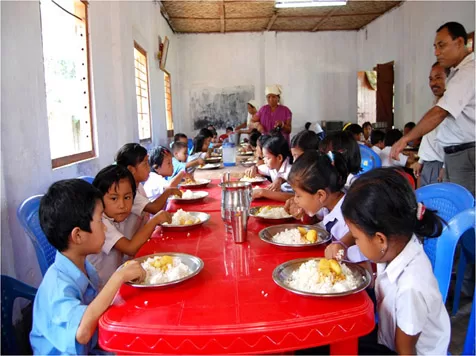
Criticism:
The Mid day Meal Scheme, despite its positive intentions, has faced criticism and highlighted several concerns that are subject to discussion. The following are the key areas of criticism:
1. Persistent Child Malnutrition:
Despite the implementation of various integrated child development schemes, India continues to grapple with issues such as child stunting, child mortality, child wasting, and undernourishment. This is evident from India’s ranking of 94 in the Global Hunger Index 2020, indicating the prevailing challenges in combating malnutrition.
2. Caste-based Discrimination:
One of the criticisms directed towards the Mid day Meal Scheme is the existence of caste-based discrimination. Reports, such as the 2008 Report by the National Campaign on Dalit Rights to the UN Committee on Economic, Social and Cultural Rights, highlight that mid day meals are often served primarily in upper-caste localities. During times of caste tensions, Dalit children may be denied meals as a means to assert dominance by upper-caste communities.
3. High Rates of Chronic Undernutrition:
The National Family Health Survey 2015-16 reported that 39 percent of children in India suffer from chronic undernutrition. This points to the persistent challenges in addressing and reducing malnutrition among children, despite the implementation of the Mid day Meal Scheme.
4. Debate on Food Quality:
The quality of food provided under the mid day meals has been a subject of debate. Media reports have mentioned instances where the health of children deteriorated due to the food provided. Ensuring nutritious and safe meals for children remains an important aspect that needs to be addressed to meet the objectives of the scheme.
5. Challenges with Aadhaar Linkage:
The linkage of Aadhaar (a unique identification card) to the mid day meal scheme has its own drawbacks. Many children do not have Aadhaar cards, which limits their access to the benefits of the Mid day Meal Scheme. This issue raises concerns about the potential exclusion of deserving children from availing the scheme’s benefits.
It is crucial to acknowledge and address these criticisms and concerns to further improve the effectiveness and impact of the Mid day Meal Scheme. By addressing issues related to malnutrition, caste-based discrimination, food quality, and access, the scheme can better fulfill its objective of providing nutritious meals and promoting the overall well-being of school children.
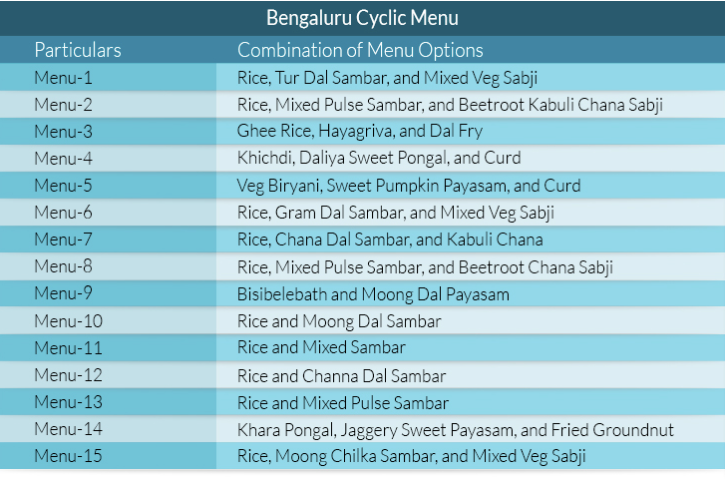
# SPECIAL CHARACTERISTIC OF PROGRAM:
The Cooked Mid-Day Meal (CMDM) scheme was introduced in April 2002, aiming to provide meals to all children studying in classes I to V in government and government-aided schools, as well as Education Guarantee Scheme (EGS) and Alternative and Innovative Education (AIE) centers. Initially, the meal contained 300 calories and 8-12 grams of proteins. However, in June 2006, the scheme was revised, increasing the calorie content to 450 and protein intake to 12 grams, along with adequate amounts of micronutrients such as iron, folic acid, and vitamin-A.
In November 2011, the norms for providing mid-day meals to children under the National Child Labour Project (NCLP) were revised, aligning them with the upper primary children norms.
From April 1, 2011, the scheme introduced the provision of Mid-Day Meal Expenditure (MME) at 1.8% of the cost of food grain, cooking cost, transportation, and honorarium to Cook-cum-Helpers. Previously, MME was provided at 1.8% of only three components: the cost of food grain, cooking cost, and transportation.
Transportation assistance in the 11 Special Category States was revised from April 1, 2010, to align with the rates prevalent in the Public Distribution System (PDS) of these states.
To address delays and risks associated with the payment of the cost of food grains to the Food Corporation of India (FCI), a decentralization process was implemented from April 1, 2010. The payment of the cost of food grains to the FCI was shifted to the district level, aiming to streamline the process and minimize potential delays.
These unique features of the Mid-Day Meal Scheme demonstrate the continuous efforts to improve and enhance the program. By revising the calorie and nutrient content, aligning norms, providing additional financial assistance, and streamlining payment processes, the scheme aims to ensure that children receive nutritious meals in a timely and efficient manner. These measures contribute to the overall effectiveness and success of the Mid-Day Meal Scheme in promoting the well-being and development of school children.
# Central Government Support:
The Mid-Day Meal Scheme receives significant assistance from the Central Government, which includes the following provisions:
100% Cost Coverage: The Central Government bears the entire cost of certain components, which are:
a. Food Grains: Free supply of food grains, either wheat or rice, at a rate of 100 grams per child per school day for primary classes (I-V) and 150 grams per child per school day for upper primary classes (VI-VIII).
b. Transportation: Actual transportation expenses incurred in transporting the food grains from the nearest Food Corporation of India (FCI) godown to the primary school.
c. Management, Monitoring & Evaluation (MME): The Central Government provides financial assistance at a rate of 1.8% of the total aid provided for free food grains, transportation cost, and cooking cost. An additional 0.2% of this amount is utilized at the Central Government level for the purposes of management, monitoring, and evaluation.
d. Kitchen Shed Construction Assistance: The Central Government also offers one-time financial support to states for the construction of kitchen sheds. Each unit is eligible for an assistance amount of Rs. 60,000. Additionally, Rs. 5,000 is provided for the procurement or replacement of kitchen devices for each school covered under the Mid-Day Meal Scheme.
These measures highlight the comprehensive support provided by the Central Government to ensure the effective implementation of the Mid-Day Meal Scheme. By covering the costs of essential components like food grains and transportation, as well as offering assistance for kitchen infrastructure, the Central Government plays a crucial role in enabling the smooth operation of the scheme. Furthermore, the allocation of funds for management, monitoring, and evaluation reflects the government’s commitment to maintaining the program’s quality and effectiveness.
# Additional Funding
To mitigate the impact of rising prices, the Central Government has increased the Central Assistance for cooking cost under the Mid-Day Meal Scheme. Effective from April 1, 2011, the cooking cost per child per school day has been raised from Rs. 2.69 to Rs. 2.89 for the primary stage, and from Rs. 4.03 to Rs. 4.33 for the upper primary stage. This enhanced cooking cost includes the expenses for pulses, vegetables, oils, condiments, and fuel. Furthermore, the Central Government provides food grains (wheat/rice) free of cost.
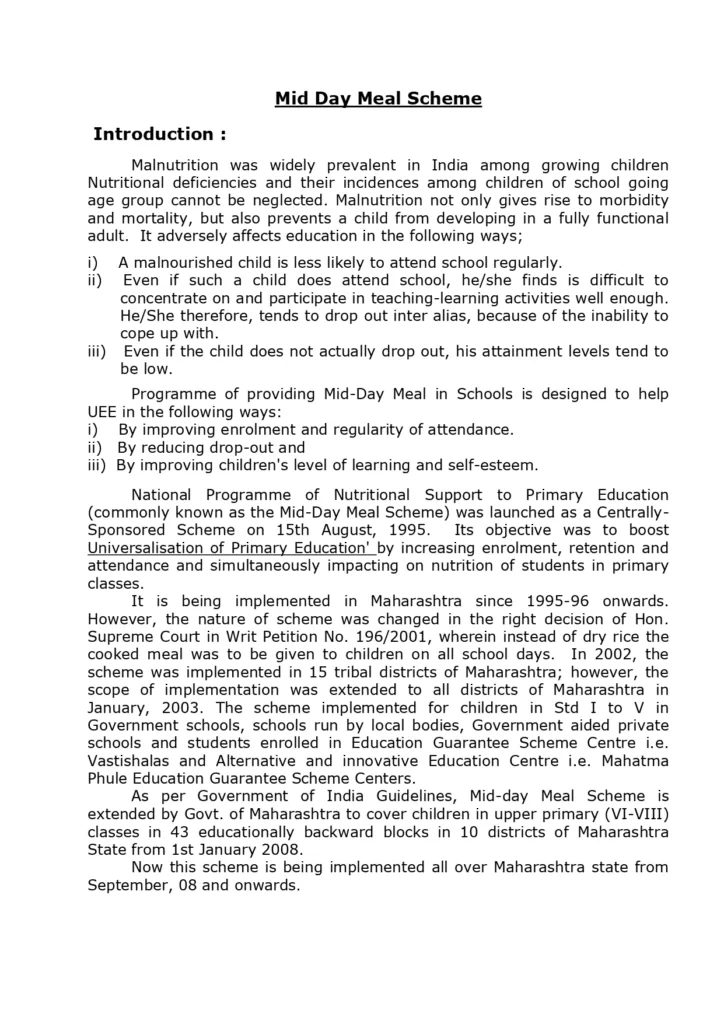
Grievance Redressal
In June 2010, guiding principles were issued to all states and union territories for establishing Grievance Redressal Mechanisms (GRMs) to address complaints related to the implementation of the Mid-Day Meal Scheme. These mechanisms allow individuals to register their grievances through toll-free numbers, dedicated telephone lines, or written letters. The states maintain data on the complaints received and resolved through the GRMs. Any complaints regarding malpractices in the scheme’s implementation that come to the attention of the Central Government are referred to the respective states or union territories for investigation and appropriate action.
During the period from 2009 to 2011, a total of 92 complaints were received by various states. Out of these, 25 complaints were related to poor quality of food, with 3 each reported in Bihar and Haryana, 6 in Madhya Pradesh, and 7 in Delhi. Additionally, 27 complaints were related to corruption or misappropriation, with 3 in Punjab, 4 in Madhya Pradesh, and 10 in Uttar Pradesh. Furthermore, 9 complaints were related to caste discrimination, with 3 in Uttar Pradesh and 4 in Madhya Pradesh. Lastly, 31 complaints were related to other irregularities, with 7 in Bihar and 11 in Uttar Pradesh. Of these complaints, 77 have been addressed and resolved, while 15 are still pending. The actions taken by the concerned states include measures such as transferring the involved school principals, recovering funds from the Gram Pradhan (village head), and initiating disciplinary proceedings against the responsible individuals.
The establishment of Grievance Redressal Mechanisms demonstrates the commitment to address any grievances or irregularities in the implementation of the Mid-Day Meal Scheme. The prompt investigation and remedial actions taken by the states highlight the importance placed on ensuring the scheme’s smooth operation and accountability in addressing any concerns raised by beneficiaries or stakeholders.
“The Achievements of the Mid-Day Meal Scheme in Fighting ‘Classroom Hunger’
The Mid-Day Meal Scheme, officially known as the National Programme of Nutritional Support to Primary Education (NP-NSPE), was launched by the Government of India in 1995 with the aim of addressing ‘classroom hunger’ and promoting regular school attendance among disadvantaged children. This scheme, which is the largest school feeding program in the world, not only tackles the issue of food security but also addresses malnutrition and lack of access to education on a nationwide scale.
Malnutrition, particularly prevalent among rural children in India, is a significant concern, with over 40% of children classified as undernourished. Anemia, resulting from a low intake of iron and folic acid, affects more than three-quarters of school children. These high levels of malnutrition and anemia can be attributed to various factors such as poverty, gender inequality, specific dietary patterns, and recurrent illnesses.
The Mid-Day Meal Scheme serves as a regular source of supplementary nutrition for children, promoting their healthy growth. To achieve its objectives, the scheme specifies the nutritional content of the mid-day meal, including calories and protein, which vary based on the primary and upper primary levels.
The historical development of the Mid-Day Meal Scheme dates back to 1925 when a similar program was introduced in the Madras Corporation area in Tamil Nadu. Over the years, various states in India initiated their own school feeding programs, and between 2002 and 2004, most states implemented universal mid-day meals in public primary schools. Today, the scheme covers over 12 crore children in more than 12.65 lakh schools and education centers across the country.
The Mid-Day Meal Scheme has several unique features. The Cooked Mid-Day Meal (CMDM) was introduced in all government and government-aided primary schools in 2002, providing meals containing specific calorie and protein levels. The scheme has undergone revisions to enhance its effectiveness, such as increasing the assistance for cooking costs to offset the impact of price rise. The Central Government provides financial support for various components, including food grains, transportation, management, monitoring, and evaluation.
To ensure transparency and accountability, the scheme has established a grievance redressal mechanism, allowing individuals to register complaints through toll-free numbers or letters. These complaints are investigated by the respective states, and appropriate actions are taken to address the issues. Monitoring of the scheme is conducted at multiple levels, including inspections, independent monitoring institutes, and evaluations by Supreme Court Commissioners.
The contributions and achievements of the Mid-Day Meal Scheme are evident from evaluation studies conducted by independent organizations in different states. The scheme successfully addresses classroom hunger, enabling children to concentrate on their studies. It plays a crucial role in providing food security and improving child nutrition, particularly in tribal areas where hunger is endemic. Additionally, the scheme has led to increased school enrollment and attendance rates across all states, narrowing gender gaps in school attendance. It has also fostered social equity by creating a platform for children from diverse backgrounds to share meals together. By encouraging school attendance and reducing dropout rates, the scheme promotes education and contributes to the overall social and economic development of the nation.
The Mid-Day Meal Scheme’s achievements in fighting ‘classroom hunger‘ and its broader impact on education, nutrition, and social equality highlight the importance of this program in India’s efforts to improve the well-being of its children and break the cycle of poverty through education.
The school feeding program serves as an effective mechanism to enhance the socialization process, breaking down caste and class barriers.
The implementation of the mid-day meal program has proven beneficial for impoverished families struggling with poverty, hunger, and the inability to provide their children with a single nutritious meal each day. These disadvantaged households, particularly those headed by widows or landless laborers, greatly value the assurance of a free lunch for their children.
By ensuring a daily meal, this program has fostered a conducive atmosphere for education, promoting the health, growth, and overall well-being of underprivileged children.
The gender gap in school participation has seen a remarkable reduction due to the Mid Day Meal Scheme, as it dismantles barriers that previously prevented girls from attending school. Additionally, the scheme provides employment opportunities for women and alleviates their burden of cooking at home during the day. Thus, women and girl children have a vested interest in the success of the Mid Day Meal Scheme.
According to the latest report from the National Council of Educational Research & Training, students who benefit from the mid-day meal program exhibit higher levels of academic achievement compared to those who do not receive its benefits.
Moreover, the scheme has instilled various positive habits among children. These include the practice of handwashing before and after meals, the use of clean water, and overall good hygiene.
In summary, the school feeding program has proven itself as a powerful tool for strengthening the socialization process and breaking down caste and class barriers. Its implementation has brought immense relief to impoverished families, who previously struggled to provide even a single meal to their children. The program’s positive impact on education, health, and the overall well-being of underprivileged children cannot be overstated.
Furthermore, the Mid Day Meal Scheme has played a vital role in narrowing the gender gap in school participation. By eradicating obstacles that hindered girls’ access to education, it has opened doors for countless young girls to pursue learning opportunities. The scheme has also contributed to women’s empowerment by creating employment prospects and relieving them of cooking responsibilities during the day.
Empirical evidence from the National Council of Educational Research & Training demonstrates that students benefiting from the mid-day meal program achieve higher levels of learning compared to their counterparts who do not receive this support.
Additionally, the scheme has instilled valuable habits in children, such as the importance of handwashing, utilizing clean water, and maintaining good hygiene practices. These habits contribute to their overall well-being and development.
In conclusion, the school feeding program has brought about significant positive changes in various aspects of children’s lives. Its impact on socialization, poverty alleviation, education, and gender equality is evident. By nurturing the physical and mental well-being of children, the Mid Day Meal Scheme continues to play a crucial role in building a healthier and more inclusive society.
The government should establish a comprehensive system to assess the improvement in children’s nutritional levels. This system should collaborate with relevant departments and ensure the maintenance of health cards in all schools to effectively monitor the health status of the children.
Efforts should be made to bridge the gap between enrollment numbers and the actual number of children benefiting from the Mid Day Meal (MDM) program.
Effective monitoring and supervision mechanisms need to be implemented. The state government should strengthen internal controls and inspection procedures at all levels to ensure the smooth functioning of the program.
Enhancing the quality of the cooked food served under the scheme is crucial. Measures should be taken to improve the nutritional value and taste of the meals provided to the children.
To ensure the proper utilization of funds, it is necessary to establish a mechanism for transferring funds directly to the school level.
The Grievance Redressal Mechanism should be expanded and implemented at all levels. This will allow for the timely resolution of any issues or complaints related to the program.
Provision should be made for training the cooks and helpers involved in the preparation and serving of meals. This training should cover areas such as hygiene practices, health awareness, sanitation, and proper cooking techniques.
Nutrition education should be provided to both children and parents. This will help them understand that the Mid Day Meal is meant to complement, rather than replace, the food provided by the family. It is important to promote the awareness of balanced nutrition and the significance of incorporating the MDM into the overall diet.
In summary, the government should establish a robust system to evaluate the nutritional improvement among children benefiting from the program. Steps should be taken to bridge the gap between enrollment and actual participation. Effective monitoring, enhanced food quality, and proper fund transfer mechanisms are essential for the successful implementation of the scheme. Additionally, expanding the Grievance Redressal Mechanism, providing training to cooks and helpers, and promoting nutrition education for children and parents are all key factors that contribute to the overall effectiveness and sustainability of the Mid Day Meal Scheme.